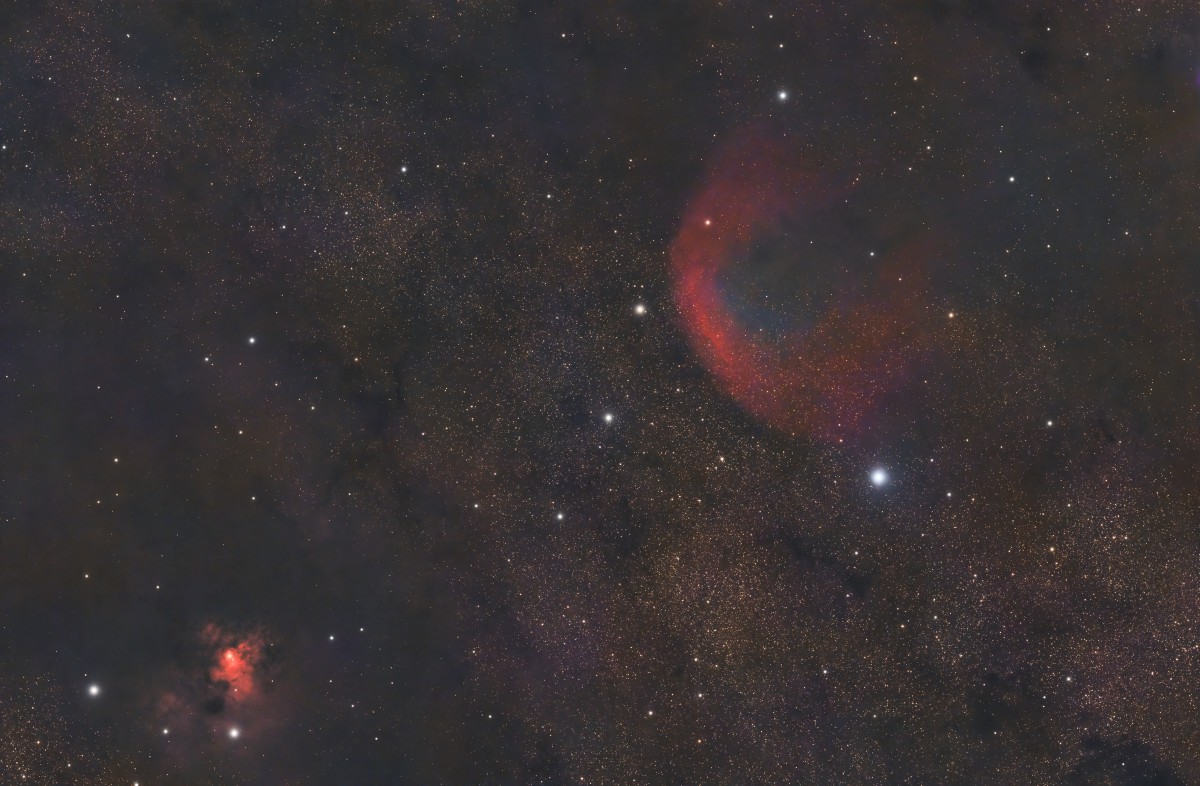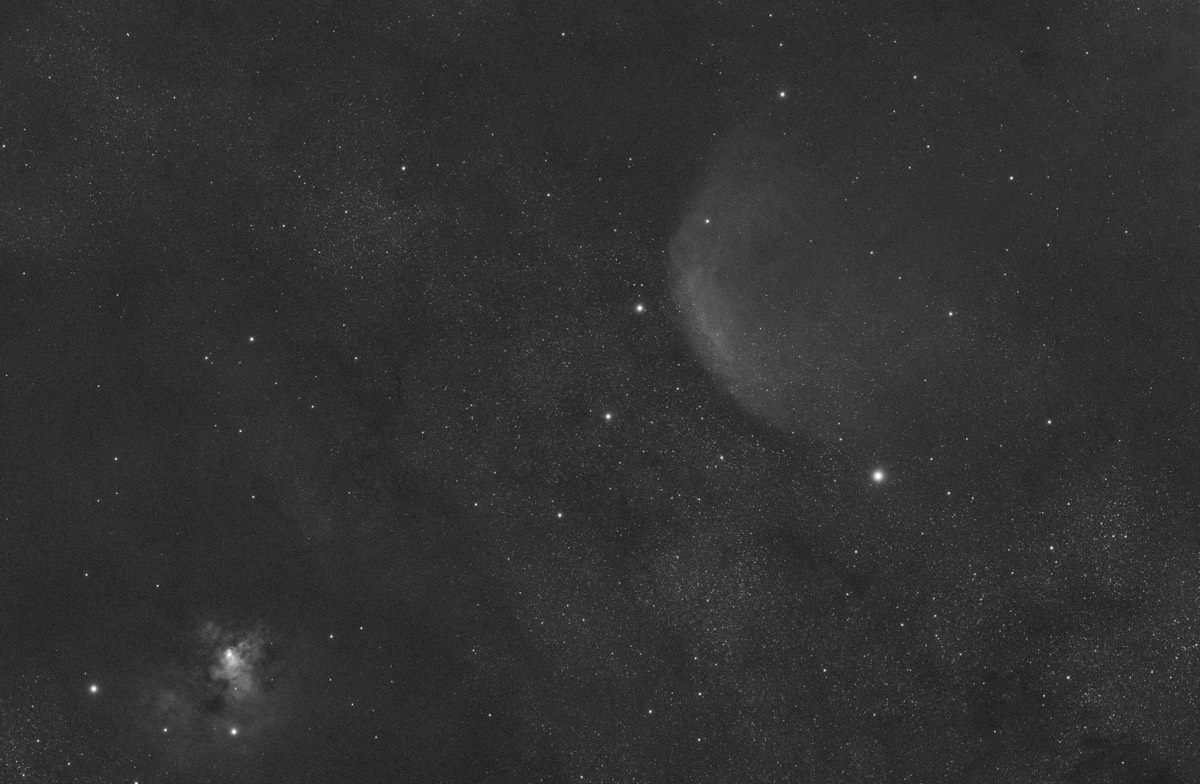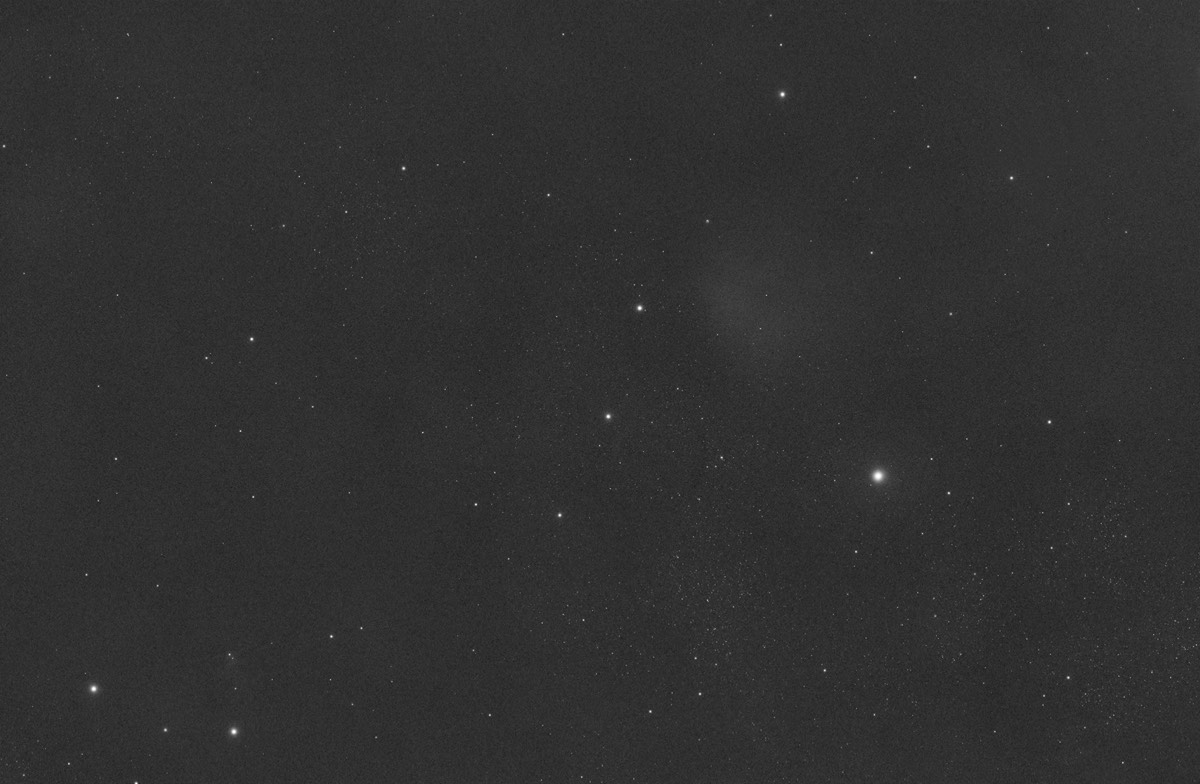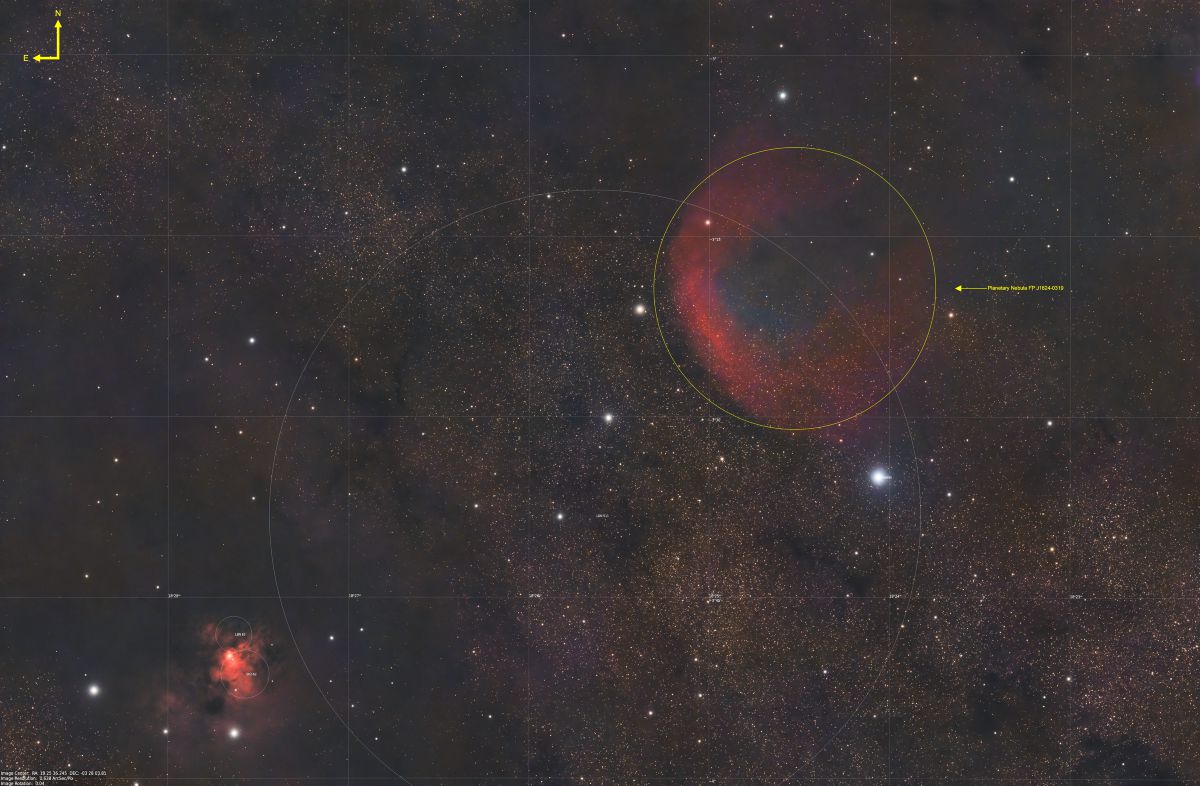Planetary Nebula FPJ1824-0319
Published 11 Nov 24
The full field of view of the color image showing FPJ1824-0319 against the backdrop of Milky Way stars. (Click image for full res view)
The Ha filtered image
The OIII filtered image showing the faint OIII signal

Full res view of the star forming region and emission nebula Sharpless 2-62. The main bright star within this nebula is the pre main sequence Herbig Ae/Be star EM* MWC 297
Annotated image of the entire image field. Click image for higher res view
About this object
The attached image shows the huge and faint Planetary Nebula FP J1824-0319 against the backdrop of dust along the edge of the Milky Way in the constellation Serpens. The area around this planetary nebula is extremely dusty with a band of relatively dust free areas positioned diagonally near the center of the image where you can see the myriad of background stars. On either side of the this band many most of the stars are hidden behind dust. FP J1824-0319 shows a ring of hydrogen emission with brighter areas along an arc to the east. It's a very large 32 arcmin by 22 arcmin in size. In the center faint OIII emission apparent, some of which is obscured by dust, which is shown as the bluish color. The central star is a bluish white dwarf of mag 14.5 called WDJ 182440.85-031959.52. FPJ1824-0319 lies approximately 1272 light yrs distant.
In the lower left portion of the image the bright star forming region and emission nebula Sh2-62 can be seen poking through its cocoon of dust. This object is pretty cool in its own right as it's an active star forming region. The bright star near the top of the nebula is a young Herbig Ae/Be star called Em*MWC297. It's a pre main sequence star. There are also several young stellar objects with the nebula that are stars in the formation process.
The image was taken from my home observatory under Bortle 5-6 skies. Total exposure time was 45.4 hrs.
The attached image shows the huge and faint Planetary Nebula FP J1824-0319 against the backdrop of dust along the edge of the Milky Way in the constellation Serpens. The area around this planetary nebula is extremely dusty with a band of relatively dust free areas positioned diagonally near the center of the image where you can see the myriad of background stars. On either side of the this band many most of the stars are hidden behind dust. FP J1824-0319 shows a ring of hydrogen emission with brighter areas along an arc to the east. It's a very large 32 arcmin by 22 arcmin in size. In the center faint OIII emission apparent, some of which is obscured by dust, which is shown as the bluish color. The central star is a bluish white dwarf of mag 14.5 called WDJ 182440.85-031959.52. FPJ1824-0319 lies approximately 1272 light yrs distant.
In the lower left portion of the image the bright star forming region and emission nebula Sh2-62 can be seen poking through its cocoon of dust. This object is pretty cool in its own right as it's an active star forming region. The bright star near the top of the nebula is a young Herbig Ae/Be star called Em*MWC297. It's a pre main sequence star. There are also several young stellar objects with the nebula that are stars in the formation process.
The image was taken from my home observatory under Bortle 5-6 skies. Total exposure time was 45.4 hrs.
Image Details
- Optics : Stellarvue SVX 152T refractor @f8 1200mm FL
- Mount: Paramount MYT
- Camera: ZWO ASI6200
- Filters: Chroma 50mm RGB, 5nm OIII filter. Astrodon 5nm Ha filter
- Exposure (min): RGBHaOIII 104:114:106:1220:1180 45.4 hrs, 2x2 binning
- Automation Control: The Sky X, Voyager, PrimaLuceLab Eagle 4
- Guiding: ZWO ASI 174mm mini
- Processing Software: PixInsight, PS CC
- Location: Stark Bayou Observatory, Ocean Springs, MS
- Sky: Typical SQM 19.6, Bortle 5-6, Suburban
- Date: June 10 - Aug 24 2024










